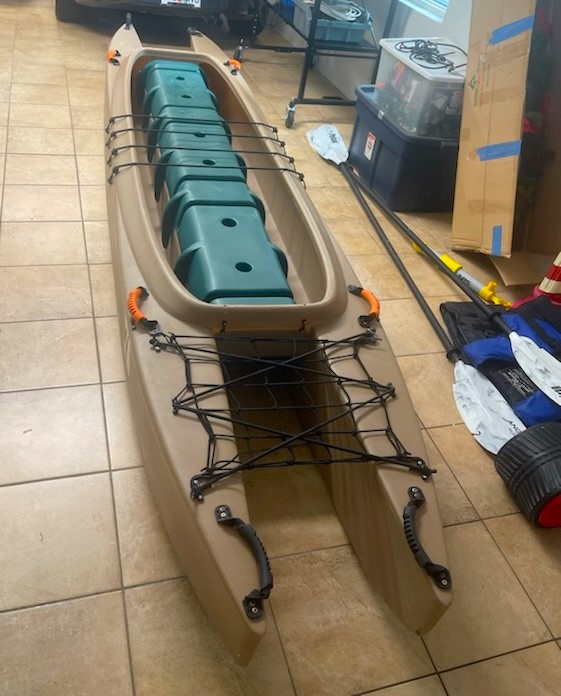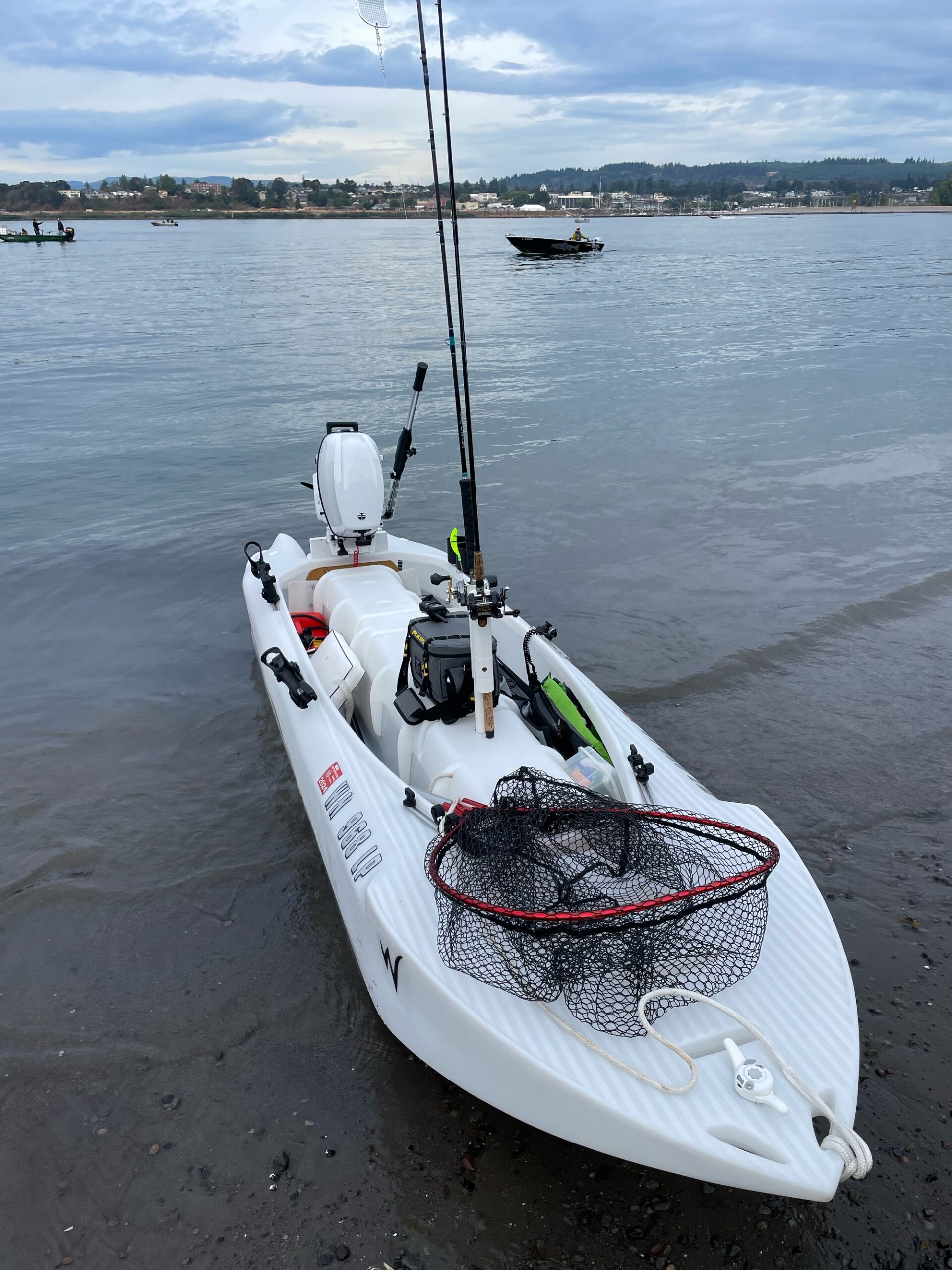Sometimes we tend to forget how enjoyable a simple paddling trip can be, if you have the right kayak –
Carrying the W720 down to the beach is easy, thanks to its two front carry handles. It just glides on the sand on its two rear catamaran hull tips, like a sled, and there is no need for you to worry about flipping it, because it won’t happen.
Then you push your W720 into the water almost entirely, and you step into its cockpit from between the two rear hull tips, without having to step in the cold water (it’s autumn in New England…).
You sit on the saddle seat, with a leg in each hull, you push with your paddle against the sandy bottom a couple of times in order to detach the kayak from the beach, and you start paddling –
You don’t have to worry at all about the stability of your kayak at any time during your trip. No worries at all. Every bit of effort you save on balancing yourself and stabilizing you kayak is a net gain for you in terms of having more power for paddling, and enjoying a better experience.
You don’t have to pay attention to the chop, and you don’t care about big motorboats driving by at full throttle while throwing big wakes that can exceed 3 feet in height. These just roll under your W720, whether you encounter them frontally or in a sharp angle, or from the broadside, or from the rear. They’re a mere distraction, and they can be fun if you feel like playing.
Tracking is easy thanks to the W720 straight catamaran hulls, and there is absolutely no need for you to operate an annoying rudder. Wind, currents and chop are not problematic as they can be when you paddle other kayaks, or a canoe.
Paddling is easy, thanks to the comfortable and powerful Riding position that allows you to use your entire body, without experiencing back pain, leg numbness, or other discomfort. Thankfully, this is not a common kayak, and it doesn’t force you to sit and paddle in the uncomfortable L position.
It’s no longer summer, and the water is getting cold, so you don’t necessarily want to get your clothes wet, because the combination of wet clothes and a 10 mph wind wouldn’t feel that great, but don’t worry, because the high free board of your W720 protects you from spray.
Do you feel like paddling standing? No problem, since all you have to do is just stand up and paddle. The W720 is infinitely more sable than any SUP (stand up paddling) board out there, and you stand in it with your feet as low as possible, that is below waterline, so paddling standing is stable, easy, and fun, and you can practice various paddling techniques (kayaking, SUP, canoeing), and switch between them according to your liking and/or water condition.
Since all typical kayaking problems are eliminated, paddling is easier and more fun, exactly as it should be.
When you return to your launching spot, beaching your W720 doesn’t require that you step in cold water, because you can step out of the cockpit from between your W720 two front hull tips that rest on dry sand, or at least relatively dry.
On another day, when weather conditions aren’t good, you can mount your small outboard motor on your W720 kayak-skiff, and paddle as far as you can, without worrying about being too tired to paddle back, because the motor will propel your boat better than you, even with a second passenger on board.
The W720 weighs only 85 lbs, and since a 2.5 HP weighs around 30 lbs, you’d be able to pull it up the beach with the motor still attached to it.
PS — The blue thing seen on top of the W720 saddle is a folded thin Polyethylene foam camping mattress that’s strapped to it.
Do you have any questions for us?
























